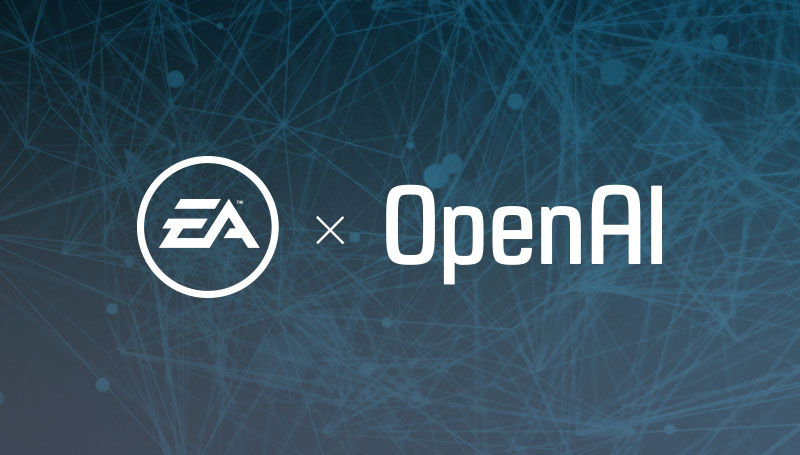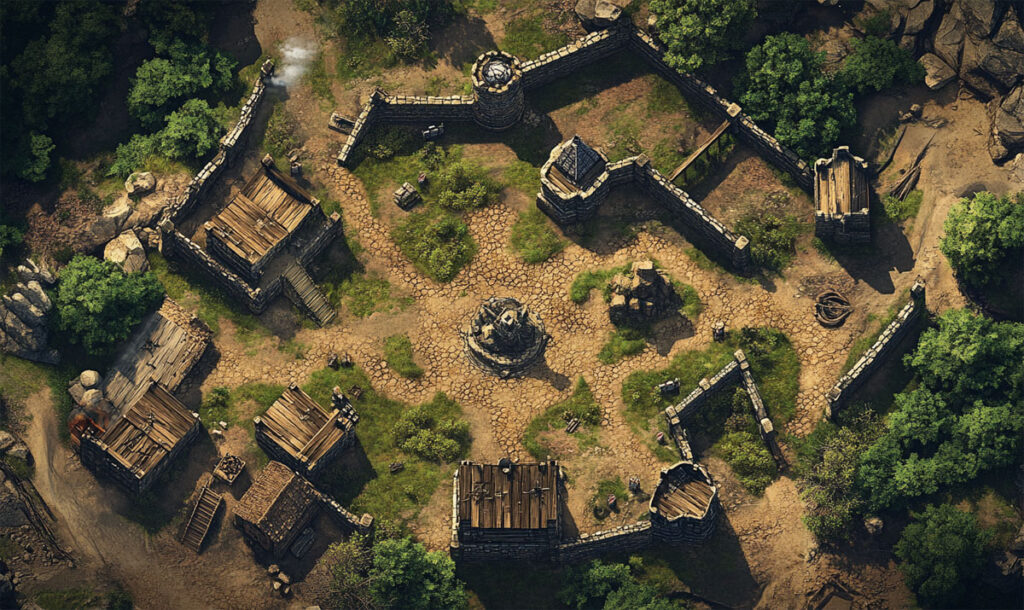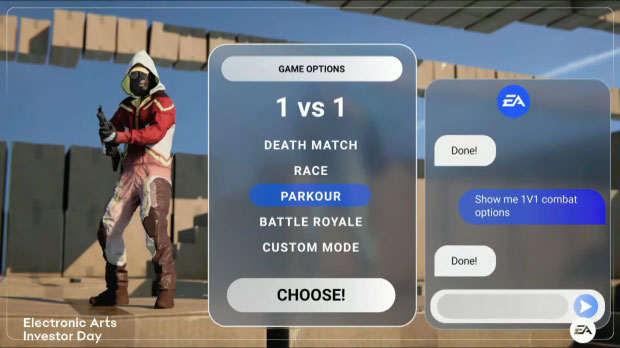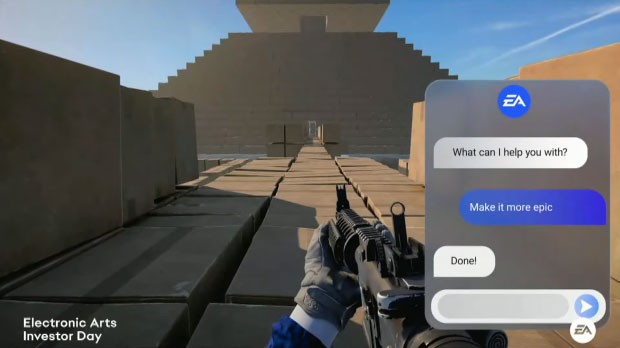User-generated content for gaming is becoming more and more appealing to entities of all sizes working in this industry. It’s not surprising, considering the strength of the top-performing UGC gaming spaces. Roblox, for example, comes with its own billion-dollar economic setup, which holds about 80 million daily users. Other games, like Fortnite and its Creative mode, have caught the attention of companies like Disney.
These massive traditional entertainment businesses are already pouring billions of USD into UGC environments and tools. Recently, Electronic Arts joined that space, but not just in the form of UGC. Instead, it opted to showcase and present its AI generative tool that will be used, among other things, to create assets in their user-generated spaces. That reveal is likely just the tip of the development iceberg at EA, where end-user applications are a small part of the rising capability of machine learning tools to create content for the video game industry.

EA Investor Day Stream
EA decided to showcase what its engineers are working on, using an investor day stream event. Company officials demonstrated the concept of a generative AI tool. With it, users can write prompts, similar to many text-based tools, including ChatGPT. This AI tool, however, can use textual prompts to create levels in EA games, visualize characters, make up the entire game design concept, and much more. Other popular AI tools already have this ability on offer. For example, ChatGPT can easily generate incredibly complex game design documents and gaming narratives.
Claude, especially in its 3.5 version, brings powerful AI-driven enhancements to game development and user-generated content creation. It helps developers quickly generate ideas, such as new game concepts, character designs, and plotlines, speeding up the creative process. Claude also assists in crafting game dialogues and narratives, easing the workload for writers and making games more immersive. Its conversational abilities improve NPC interactions, making them feel more dynamic and realistic.
For UGC creators, Claude simplifies coding and scripting, allowing more players to create custom content like mods and quests without extensive technical knowledge. Additionally, it streamlines workflows by automating repetitive tasks like bug fixing and localization, giving developers more time to focus on design and creativity. By integrating Claude, game developers and creators can unlock greater efficiency and innovation.
Stable Diffusion or Midjourney can generate incredible gaming images (such as characters, maps, backgrounds and more) or even animated sequences. However, EA combines all of these functionalities into one tool and then binds the tool to their existing gaming spaces.

Imagination to Creation
The official name for the tool that EA showcased is Imagination to Creation. The representatives used the term UGX instead of UGC, which stands for User-Generated eXperiences. They believe the tool should be able to take fully-operated UGC elements, like weapons created by the community, and blend them with the output of the AI generators. The generator would hold all of the licensed elements from the EA franchises, like character models, which could be combined with anything else the user creates.

According to EA, this process could even produce near-whole gaming experiences, where players can drop their characters into custom maps and play using their own set of parameters. This is just in theory, at the moment.

Simultaneous Processing and Simultaneous Predictions
The engineers from EA are chasing a very elusive prize – a generative AI tool that offers AAA-level quality, followed by both simultaneous processing and predictions. Behind these complex terms lies a simple idea – have an AI tool that can generate a top-tier gaming experience, which is on the level of other, human-made EA games. On a very practical side, even if the programming and other creation-related factors are not taken into consideration, EA will have to deploy huge server farms to allow such a thing to operate seamlessly with its other gaming environments. The price of hardware for these farms, especially considering the present state of AI chipsets and processors, is enormous. Even if EA was ready to invest hundreds of millions of USD into hardware, it can’t buy it immediately, due to the high demand from the AI industry. Because of that, for now, it seems that imagination of Creation and the whole field of User-Generated eXperiences is more of a distant aspiration than actual working tools and UGC spaces.
However, EA investors are likely glad to see the company moving in that direction, being that both AI and UGC presently help all manner of gaming stocks generate value.
